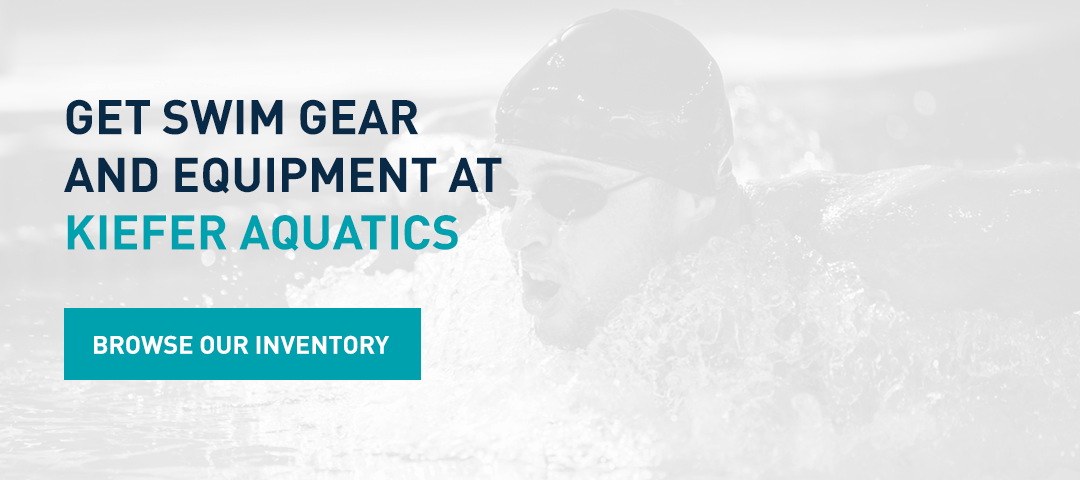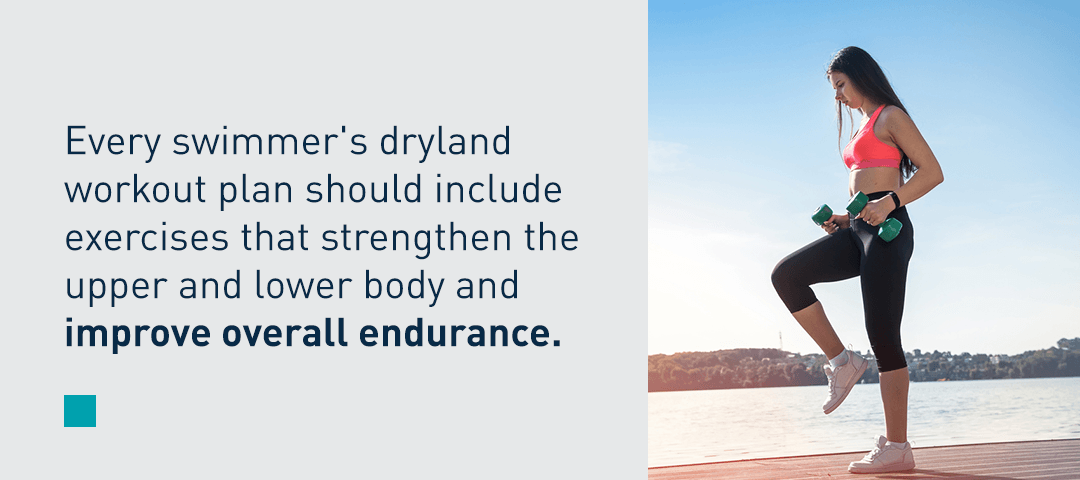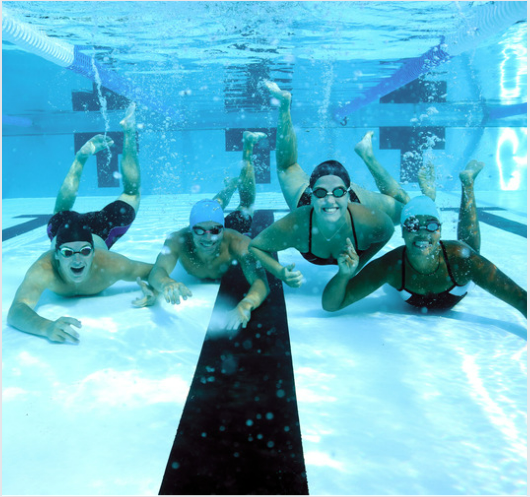Guide to Dryland Swimming Workouts and Products

Swim Workouts
|
August 3, 2020
Whether you're a competitive swimmer, lifeguard, or someone hoping to improve their performance in the water, you can do a lot of things on dry land to become a better swimmer. Dryland training for swimmers is a great way to stay in shape, build strength, and balance while minimizing the chances of injuring yourself during a swim.


Products for Dryland Swim Training Workouts
To get the most out of dryland exercises for swimmers, invest in quality training equipment. The right gear can help you focus on the key areas of your body that you use when you're swimming and provide a clear focus for your workout.1. Resistance Bands
Resistance bands can help you improve your range of motion and build strength by adding a resistive force to your workout. You can use them on their own to target specific areas — like your legs, chest, or biceps — or integrate resistance bands into your existing routine to keep tension in your muscles. Plus, resistance bands and cords are simple to use, lightweight, and easy to take with you whether you workout at home or on the go. If you're a beginner, choose a light resistance band and gradually work your way up. Depending on which areas of your body you target when using these bands, you might see your lap time decrease or find it easier to swim longer distances.2. Free Weights for Swimmers
Free weights are an excellent way to target specific muscles and gain strength. There are a few different kinds you can use for dryland training:- - Ankle and wrist weights: Ankle and wrist weights are similar to resistance bands because they aid in strength training by adding tension and are a lighter alternative to dumbbells. You can find ankle and wrist weights to use in the water and for swimming dryland training workouts. To avoid injury, never use ankle or wrist weights for too long and consult a professional trainer about the best weights for your body type and fitness level.
- - Dumbbells: Dumbbells let you target each side of your body separately, making them a great tool for strengthening specific areas. Start with lighter dumbbells until you build enough strength to add heavier ones.
- - Medicine balls: Medicine balls are weighted balls that you can toss and catch to strengthen muscles without putting too much strain on your joints. You can use one lying down, sitting, or when standing.
3. Stationary Swimming Machines
Stationary swimming machines are a unique way to practice swim techniques and train without the need to go to the local pool or beach. They are a small, stationary pool that uses currents and water movement to replicate the real motion of a pool, ocean, or other body of water. You can think of a stationary swimming machine like a treadmill because, while you are constantly swimming in a forward position in a stationary swimming machine, you stay in one place.4. Dryland Swim Training Benches
If you want to practice your flutter kicks, breaststroke, and freestyle stroke, consider using a dryland training bench. To use a dryland swim training bench, you lay down on the platform and use various attachments, bands, and paddles to move your arms and legs as if you were swimming. If you're just starting out and want to work on your form, this is a great way to keep your arms in the correct position.Exercises and Dryland Training for Swimmers
Every swimmer's dryland workout plan should include exercises that strengthen the upper and lower body and improve overall endurance.
Upper Body
For a thorough upper body workout, implement the following into your exercise routine:- - Warm up with arm swings: Before you dive too far into your upper body workout, do some arm swings to stretch out your muscles and prepare them for training. Some good arm swings to include are small circles, big circles, and forward swings.
- - Lift free weights: Lift free weights, like dumbbells and kettlebells, to target where you want to build muscle.
- - Do push-ups and pull-ups: Push-ups and pull-ups can strengthen your shoulders, triceps, back, and other parts of your upper body that you rely on in the water.
- - Use resistance bands: Resistance bands are ideal for beginners and advanced swimmers and can help you build strength while practicing arm movements.
- - Practice planking: Planking strengthens your core, which you use to stay balanced and keep good form while swimming.
Lower Body
A strong lower body is the best way to keep your kicks powerful and your form straight. To improve your lower body strength, use these exercises in your dryland training program:- - Warm up with leg swings: To warm up before your lower body workout, swing your legs to the front, back, and from side to side.
- - Do squats: Squats build up the muscle you need to do flips, turns, and kicks while in the water. Start by mastering the basic squat, then add in free weights to increase resistance and build more muscle.
- - Practice flutter kicks: Replicate the flutter kicks you do in the water in your home or at the gym by lying flat on the floor, faceup, with your arms straight at your side. Flutter your legs up and down as if you were swimming. To keep the correct form, do not let your legs touch the ground while kicking.
Endurance
Even the most advanced swimmers can benefit from regular endurance training. The more you practice your endurance techniques, the longer and faster you will be able to swim. For dryland endurance training for swimmers, add the following to your workout:- - Do jumping jacks: Jumping jacks exercise multiple parts of your body without special equipment. At the beginning of the week, record how many jumping jacks you can do without stopping. Then, re-record this number at the end of the week and note any changes.
- - Use a stationary swimming machine: A stationary swimming machine can help you practice your swimming endurance in resistant waters. This is an especially useful tool if you're a lifeguard or swim in waters with strong currents.
- - Go for a run: Running is a simple form of cardio that can have enormous benefits for a swimmer. For example, running increases your endurance, encourages you to practice breathing techniques, and can help you maintain a healthy weight.
Get Swim Gear and Equipment at Kiefer Aquatics
Once you have found a dryland routine that you enjoy, keep practicing and challenge yourself by adding more resistance and weight. Over time, you will start to see results in the water. Kiefer Aquatics has the gear you need for in-water and dryland training, including resistance bands, free weights, and trainer belts. Visit us online to browse our inventory of swim, pool, and lifeguard gear and to get the tools you need to become a more powerful swimmer.







Leave a Comment
Your email address will not be published. Required fields are marked *